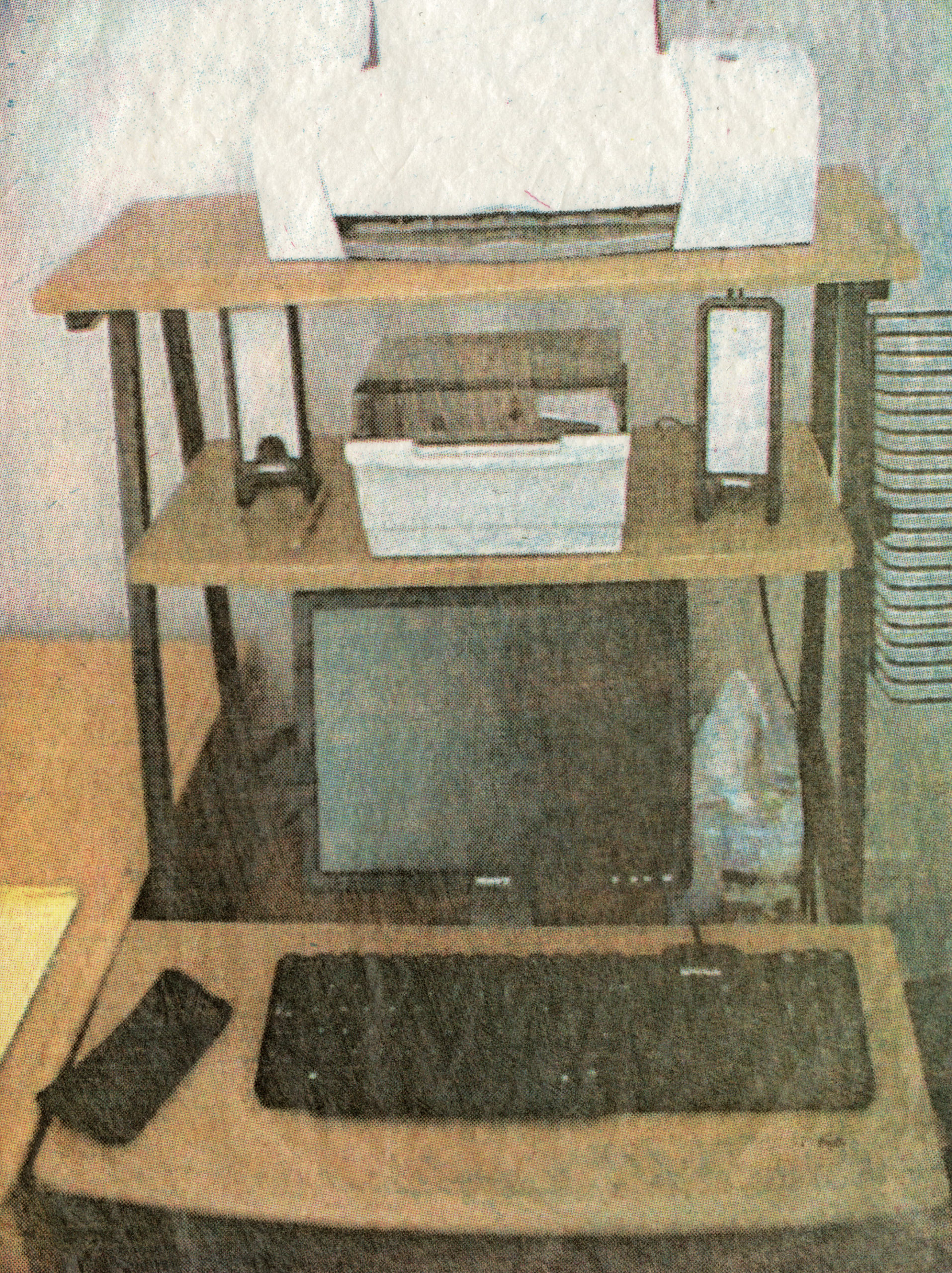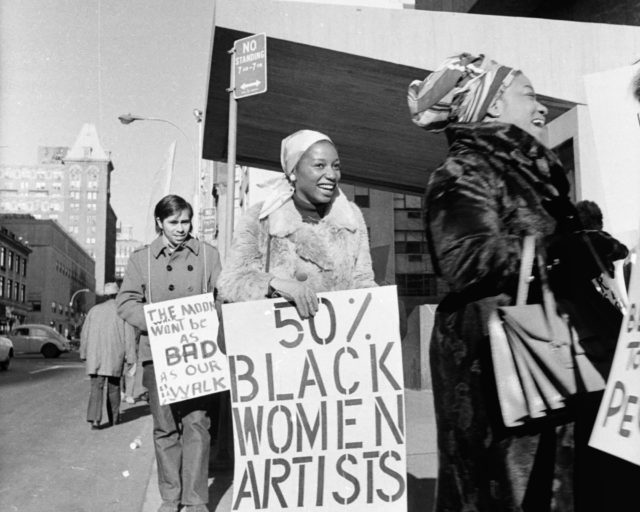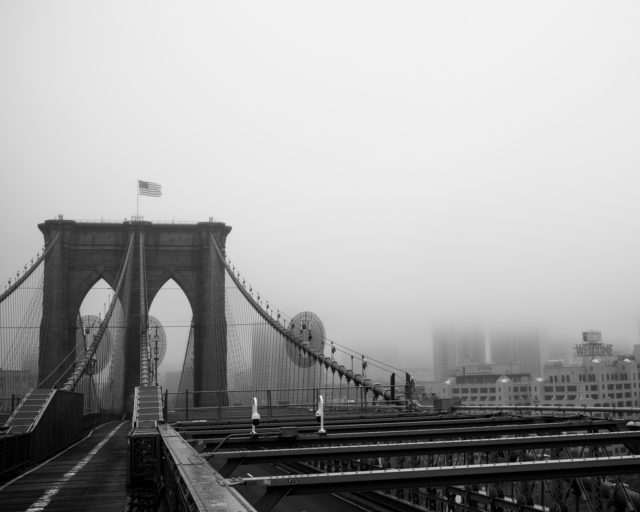Rowan Renee, Evidence #8, 9: Dell Monitor, Keyboard, 2019. Photolithograph of digital image from the Port St. Lucie Police Department
Currently on view at MoMA PS1 in New York, Marking Time: Art in the Age of Mass Incarceration is a sweeping exhibition organized by Dr. Nicole R. Fleetwood, an accompaniment to her groundbreaking book of the same title. Marking Time takes up the relationship between visual culture and the carceral state, and features work by over thirty-five artists—individuals who are in prison and those who were formerly incarcerated, as well as nonincarcerated artists.
Rowan Renee is one such artist, whose installation, No Spirit for Me (2019), renders publicly visible the records of their father’s criminal case in the state of Florida. Using a variety of techniques that include lithography, metalwork, and weaving as means of translating the state’s documents, Renee creates an environment that troubles the claims of “justice served” so deeply embedded in the mythology of the prison apparatus. In our recent conversation, we discussed this embodied translation further, the conditions of abolition, and the different tasks of the autobiographical.
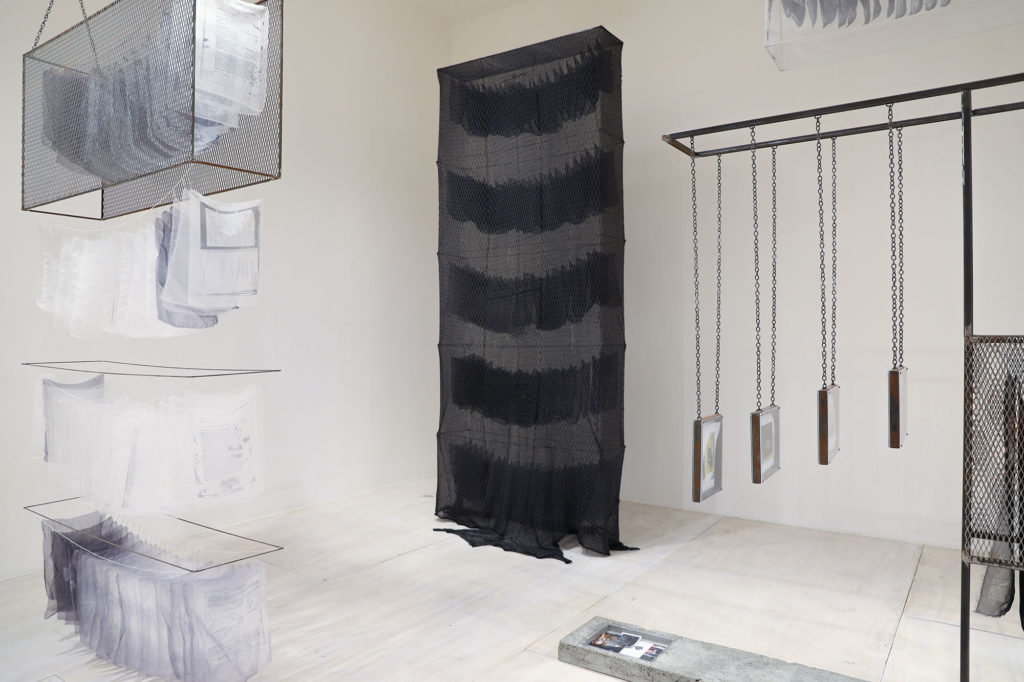
Photograph by Kris Graves. Courtesy MoMA PS1
Jessica Lynne: No Spirit for Me seems to complicate perceptions of truth in photographs. Why is this negotiation of truth and fragility, especially as it exists in the hands of those who are tasked with upholding the carceral state, important to you?
Rowan Renee: The motivation to do this work is personal in the sense that I wanted to know the truth behind family secrets. My father was arrested while I was traveling. I was twenty-one, and I was on the road, and because of the nature of the crimes he committed, it was covered on the TV news. I wasn’t at home living with my mom at the time, and she was trying to keep it from me, because she didn’t want to freak me out or upset me.
I found out about my dad’s arrest from my dad’s oxygen supplier, because he was seventy-eight years old, disabled, and on oxygen. They called me, because I was his next of kin, to say that they were taking his oxygen away. I asked, “Why are you taking his oxygen? What’s wrong with him?” I thought he was in the hospital, or he had died, and no one had told me.
The woman I spoke to hung up, called me back, and said, “So, have you spoken to your father?” I was like, “I haven’t spoken to him in a while.” She responded, “Well, you should, because he’s in jail. You should really talk to your father,” and hung up on me again.
When my dad went through the system, he was arrested, his bond was revoked, and he was put into pretrial detention for about a year and a half before he was convicted and sentenced on a plea deal. I didn’t really have any idea what was happening while it was happening, and I didn’t know the details of his case. I think this is, partially, because of the opaqueness of the criminal-justice system and the shame around it that is felt by the families of those who are accused.
I started to question what happened about seven or eight years after my dad died in prison. That started this process of looking for documentation, stuff that I could find through public court records, and prison medical records and other prison records. This eventually led me to reach out to the lawyers, both my dad’s defense attorney and the prosecuting attorney, who was actually a state attorney, who shared the prosecution’s case file with me, and that was not included in public information.
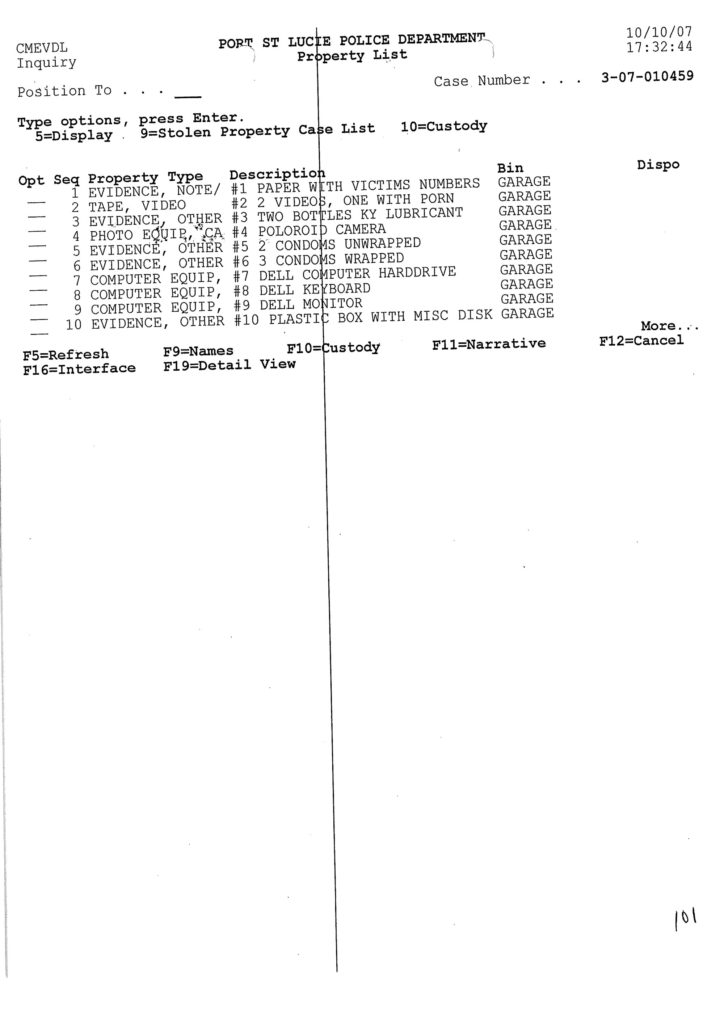
Lynne: Can you talk about the logistical and technical process of what it means to acquire case files in this manner?
Renee: Because my dad’s case happened in Florida, state laws around public information requests are very open. There’s a lot that you can get online. The court system for criminal cases keeps a searchable database that anyone from the public can log into and see certain details about certain cases.
Then there are also court transcripts, which you have to pay for. I don’t remember the exact amount, but I spent about $400 getting all of the court transcripts from the hearings my dad went to. For example, if you are incarcerated and trying to appeal your case, you will be required to have them for any court appeals, and so there’s this financial barrier to being able to get those transcripts because of the fees associated with it.
The state attorney’s files were surprisingly easy to get once I knew where to go. I think a couple things worked in my favor. I was the next of kin, it was my father’s case, and I had told the state attorney that I was a victim looking for closure. I think that made them sympathetic, and they wanted to help me. They, at their discretion, decided to share everything they could that wasn’t protected by confidentiality laws. Anything related to the victim’s identity—including evidence, photos, or his name—they’re not legally able to share.
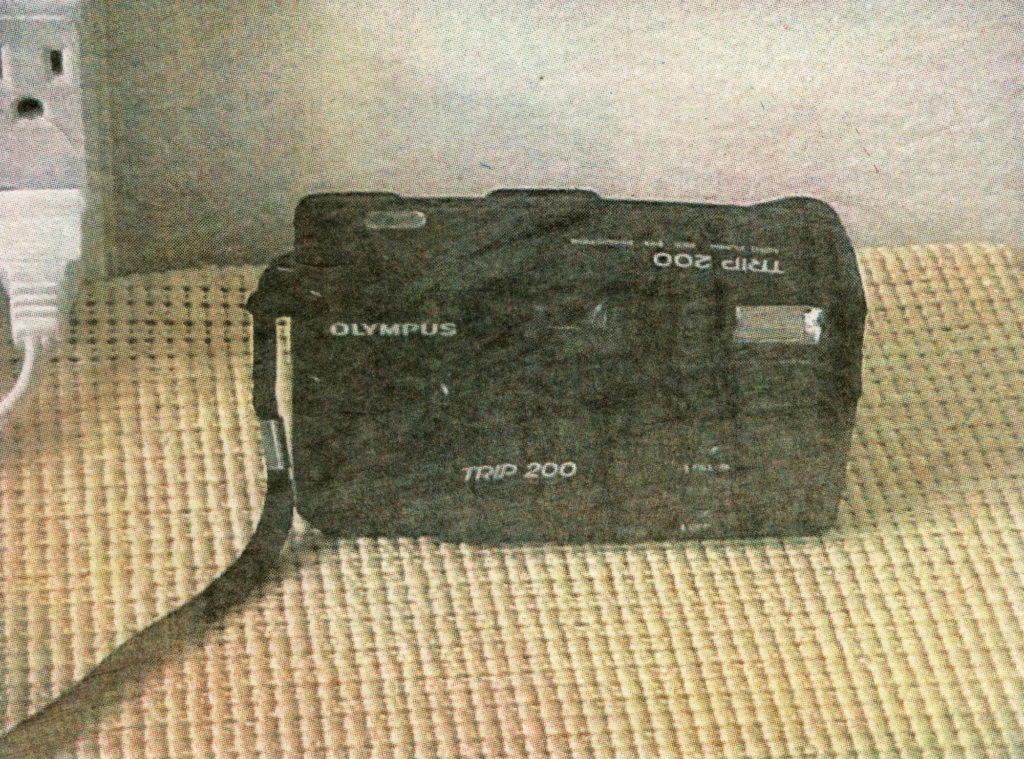
Lynne: I wanted to ask you about the idea of the autobiographical. In a 2009 conversation with Dawoud Bey for BOMB Magazine, Carrie Mae Weems speaks about using herself and her experience as a “vehicle” in her work. But, she says, “It’s never about me; it’s always about something larger.” Does this framework resonate with how you might be grappling with the autobiographical in No Spirit for Me?
Renee: It resonates with me a lot. There has been a trajectory that I can trace between diving deep into a personal story, making that story public, and how I am reading through these documents that are about my father and memories that I have, and connecting those personal stories to a bigger pattern. Why did this other thing not happen? Why was this thing so easy for me, or this other thing so impossible? I am thinking about all those things in the context of these larger dynamics of power, access, privilege, and shame, and how they intersect.
I have a very indirect relationship to photography. I call a lot of things “photography” that aren’t actually photographs, or were not produced with a camera. I feel like I question a lot. Who can tell whose story? Who has the right to represent another? I think, maybe, the deep dive into the personal is a way to tap into what I feel I can adequately represent, and that if I’m vulnerable about the personal, maybe that will speak to and connect with a larger narrative, and to others.
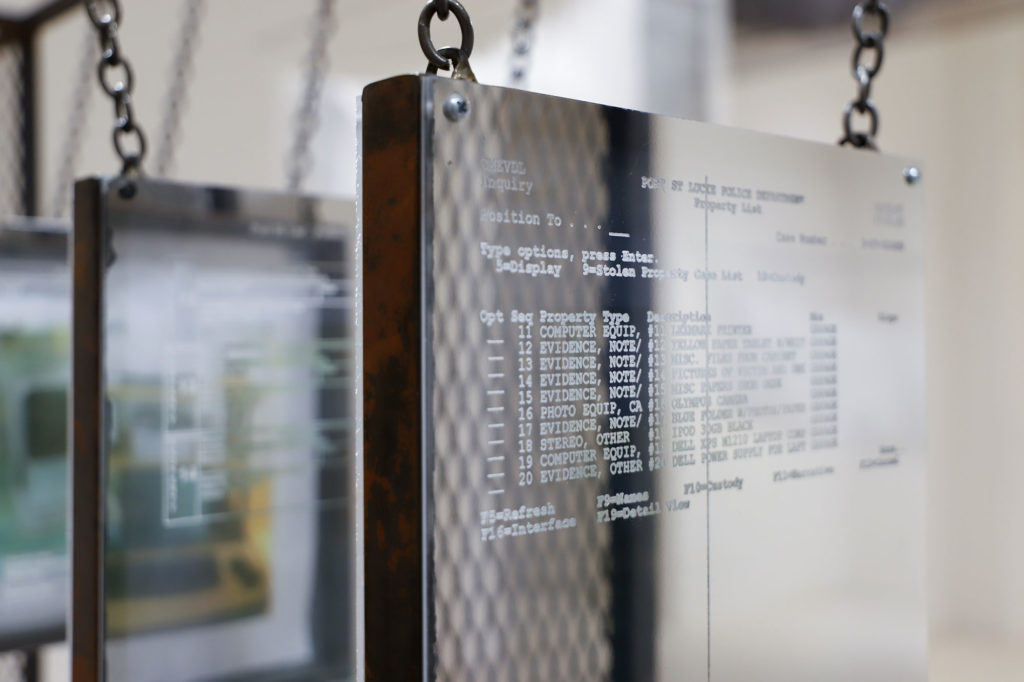
Photograph by Kris Graves. Courtesy MoMA PS1
Lynne: There is a nuance here. Your project does not make a mockery of an actual experience that real people have with a system that causes a tremendous amount of harm, and yet it is reminding us of this ongoing harm through the specifics of your father’s case.
Renee: I think I have slivers of didacticism. I basically translated the contents of my father’s case file into just another medium, right? I took it from paper and put it on chiffon. I took the images from digital files—digital images—and printed them as lithographs, and in some way, the transformation was really subtle. I think in doing that, I’m presenting the case to the audience and allowing them to read it and come to their own interpretations and conclusions about justice.
Lynne: Was there ever a moment when you thought against that kind of craft-based element in terms of form? You mentioned that you see, find, and read photography in so many different types of efforts or visualizations. How did lithographs become the container for your ideas?
Renee: I think that embodiment was very much at the center of my material choices and my process of translation. Everything in the installation I made through processes that are very labor-involved. For example, the pages were printed using a lithographic proofing plate through an etching process. Each page was printed by hand, and you spin the wheel on the press and your whole body is involved. In the process of inking, you actually read the text, and that slowness that was built into the translation process gave me time to process not only the material, but also the content of the things I was looking at.
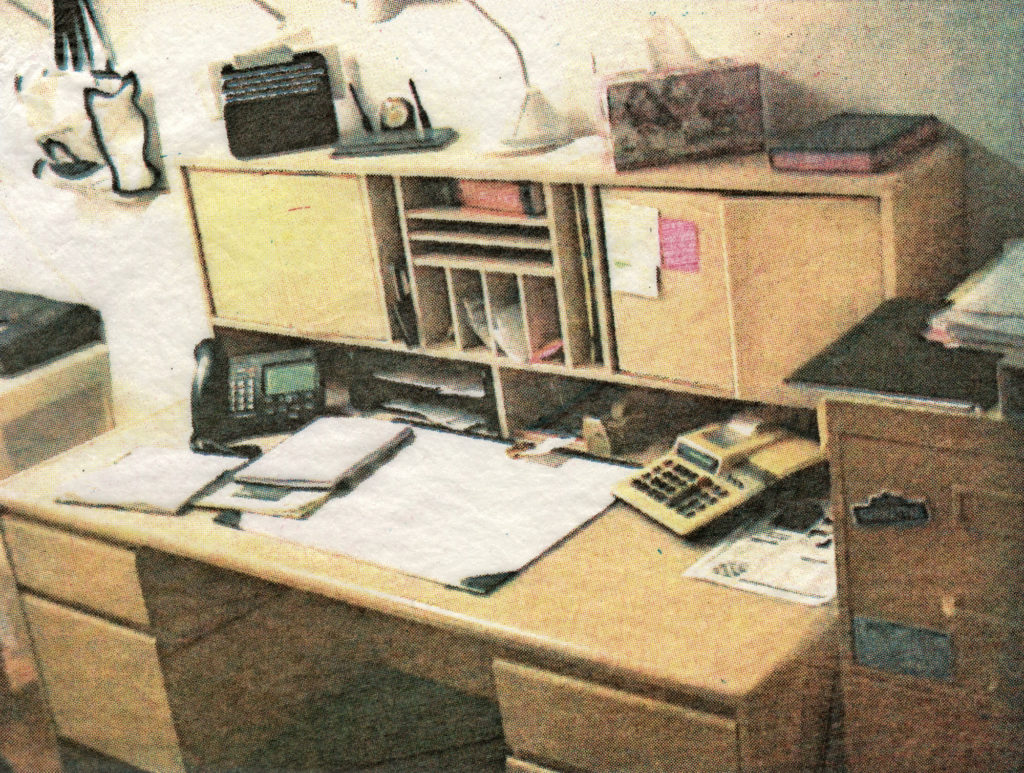
Lynne: How, then, are you defining “transformative justice”? Or, what does it mean to be engaged in such a transformation?
Renee: For me, in the absence of any kind of justice through the criminal-justice system, and also grappling with the trauma caused by the “justice served” of the criminal-justice system, the process of art-making gave me a kind of closure with my father that I don’t think I would have otherwise found. I think it opened up an avenue for understanding the experience and persecution of homosexuality in the South; and my father as a man born in 1929, who went to prison for the first time in 1957, at a time when consensual sodomy was a crime—a felony—with a twenty-year maximum sentence. These structural biases in the law create impossible situations for people to live in. I found a kind of sympathy for my dad through the process of this and also, I think, a sympathy for myself, and maybe a release. Working on this project, for me, affirmed the idea that prison and incarceration does not create accountability, and it does not create justice for violence. It exists in and perpetuates a cycle of violence. Art, I think, and this process of creating this work gave me a way to imagine a kind of justice outside of the carceral logic of punishment.

Photograph by Kris Graves. Courtesy MoMA PS1
Lynne: In thinking about how this work refutes the assumption that punishment leads to rehabilitation—which is, again, bound up in carcerality—and as this is part of how the work troubles the perception of truth, do you think that it is a project that will continue to stay with you across time? Or do you feel like there is a certain kind of finiteness to what this project can do as it relates to truth-telling?
Renee: This project has opened a pathway, and it’s the start of something that might take many years to fully work through. I also want to say something about audience, because some people who view this work are moved by it deeply and have reached out to me to say so.
What I’m trying to talk about in the work makes a lot of people uncomfortable and raises very complex issues that are, I think, at the heart of the abolition movement—specifically, how to respond to deep harm that has been done by individual action, or individual acts that have caused deep harm to individuals and communities that sometimes is irreparable.
There’s a lot of discomfort about diving into those issues in a sensitive and compassionate way. There are many different levels of harm that are happening as a result of our criminal-justice system, and there’s a systemic violence that is perpetuated by a system of structural injustice. There’s often harm and trauma in the lives of people who are incarcerated—they have been victims themselves and never experienced justice for the harm they endured. Then there’s the harm of the victims, and the harm caused to the families of those who are incarcerated and seeing their loved ones taken out of their families and communities.

All works courtesy the artist
Lynne: So, your work might offer a nuanced view without being judgmental.
Renee: The mainstream conversation wants to put these things in a binary and not talk about the complex and messy intersections that exist. What I can do, as my father’s child, is talk about how, in my life, I’ve had to navigate a deep and grievous harm alongside the bond and love I feel for my father, and that perspective illuminates something for me that could be useful to how we could navigate these complex conversations with audiences that might be resistant to the asks of prison abolition.
Marking Time: Art in the Age of Mass Incarceration is on view at MoMA PS1, Queens, through April 4.










